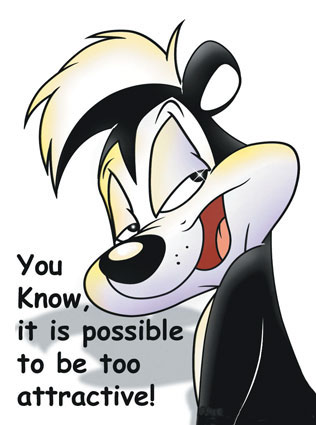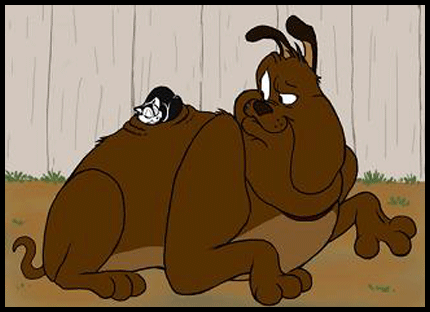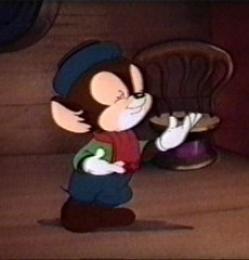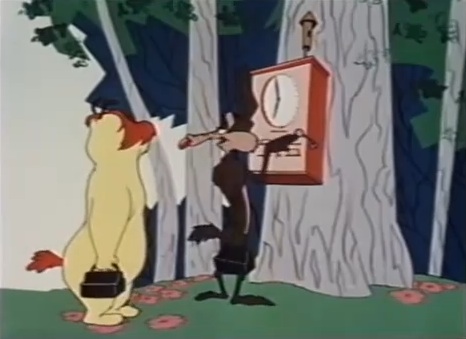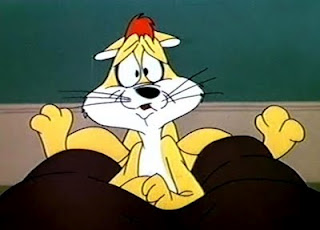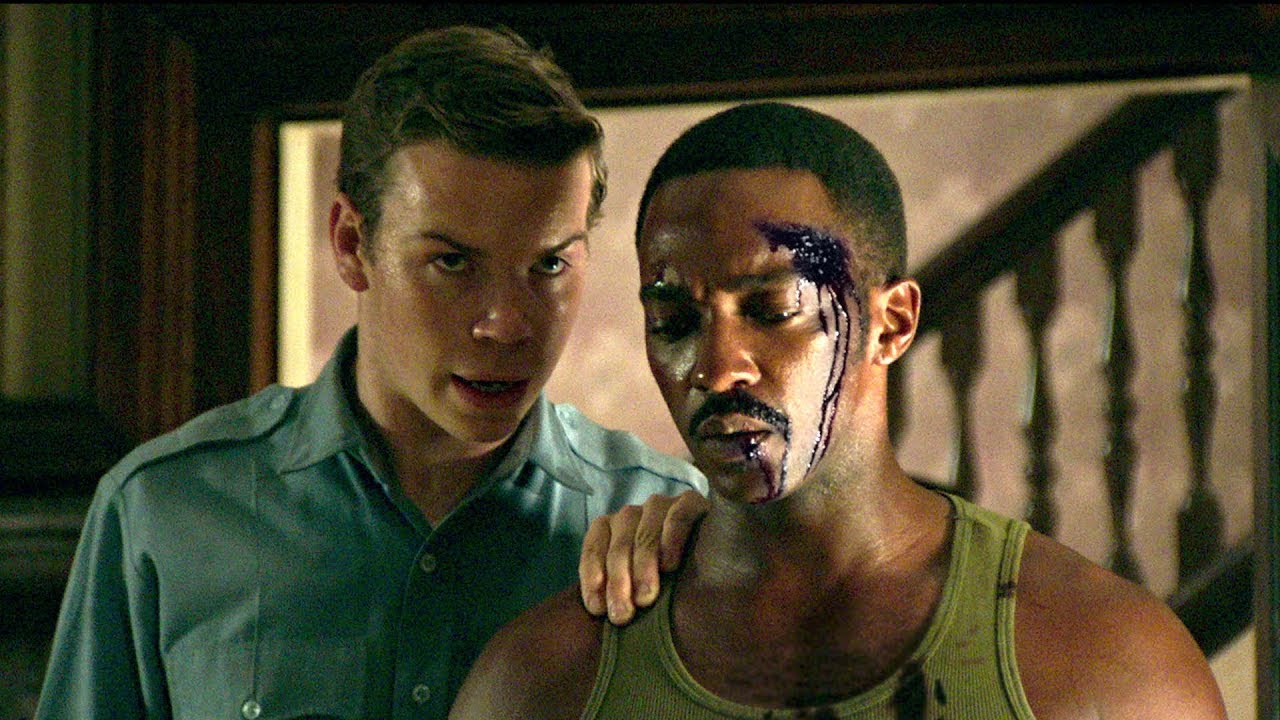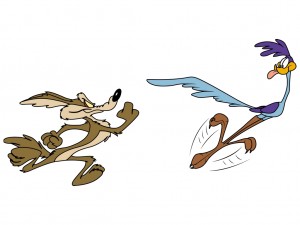
Monday, November 7, 2011
“The name ‘Chuck Jones,’ according to my uncle, limited my choice of profession to second baseman or cartoonist”…This is what Chuck Jones said about himself. We cartoon lovers are all supremely grateful for his choice of career!
Now his fans and family are preparing to celebrate his centennial birthday with a year filled with festivities. The very first event was presented Friday by Cinema Siren’s base of operation, ArtInsights, as part of the Washington West Film Festival that has just come to Northern Virginia for its inaugural year, is “Chuck Jones: Fabulous Firsts,” which features his cartoons and a talk by yours truly, Cinema Siren.
Then his grandson is coming to ArtInsights on Sunday, bringing extremely rare art to show, and the Siren is going to be interviewing him about his memories growing up with Chuck Jones as a grandfather and about Chuck’s legacy of art.
Jones is known for some of the most beloved cartoons in Looney Tunes history, like “What’s Opera Doc,” “Broom-Stick Bunny,” and “For Scent-imental Reasons,” for which he won an Academy Award. Did you know, though, just how many famous cartoon characters he actually invented? Well, that’s what Cinema Siren is here for! In honor of the beginning of his centennial year celebration, here are the top 10 cartoon characters to float up like a bubble from the genius imagination of Chuck Jones.
#1 Wile E. Coyote and Road Runner
Yes, there are two characters at the top of the list, but who can imagine one without the other? Together they represent perseverance and the eternal struggle for success. Their first cartoon is 1949’s Fast and Furry-ous. Wile E. was based on the coyote in Mark Twain’s book Roughing It, in which Twain describes the coyote as “a living breathing allegory of Want. He is always hungry. Early model sheets have his name as “Don Coyote,” a play on Don Quixote. Animation background artist Paul Julian provided the “meep meep,” which was originally a car horn imitation he did in the WB parking lot get folks out of his way when he was in a hurry.
#2 Pepe le Pew
One of Chuck’s producers Eddie Selzer said a skunk with a French accent wasn’t funny, and that’s all he needed to be motivated to make him successful, and ultimately Oscar worthy. Chuck said Pepe (originally named Stinky in the 1945 short “Odor-able Kitty”) was loosely based on his colleague Tedd Pierce, who saw himself as quite a ladies man, erroneously believing his interests were always returned. Pepe’s speech was inspired by actor Charles Boyer’s Pepe le Moko from the 1938 movie “Algiers.” Chuck said he created Pepe in part because he himself had been a shy child and wanted to invent a fearless alter-ego. Pepe won Jones the Oscar for 1949’s For Scent-imental Reasons.
#3 Marvin Martian and K9
Marvin, whose mission is to blow up Earth because it blocks his view of Venus, had his debut in 1948’s Haredevil Hare. For such a popular character, it’s surprising to note he is only in a handful of cartoons from 1948 to 1963. His costume of helmet and skirt is based on these on the god Mars. Cartoons with Marvin (originally called Commander of Flying Saucer X-2) also introduced instant martians and K9, his faithful martian dog, both of which are extremely popular with fans, including those at NASA who put his likeness in miniature on the Spirit rover, that traveled to Mars.
#4 Michigan J Frog
This favorite blasted into history on Dec. 31, 1955 in “One Froggy Evening.” Of course he’s the dancing singing male frog wearing a top hat, carrying a cane. Chuck has said that cartoon is meant to encompass and articulate the entire human condition in the span of its five minutes, and a wonderful parable of greed. The challenge and discipline required by Chuck Jones was only one man can ever hear Michigan’s voice. Steven Spielberg called it the Citizen Kane of animated film. It was voted #5 in the Top 50 Greatest Cartoons and is in the National Film Registry.
#5 Marc Antony and Pussyfoot
Once again, two for one, Marc would be nothing without his beloved kitty Pussyfoot, so we add them together in the list. Premiering in “Feed the Kitty” in 1952, the duo appeared in five shorts together. Chuck mentioned the characters are meant to relate the complexity of a love relationship. Marc Antony is the epitome of the big galoot with a big heart, and his expressions are often Chaplin-esque, which is good since he gets the story across in his cartoons with gestures and movements. The movie “Feed the Kitty” was voted #36 of the 50 Greatest Cartoons, due to these great characters created by Chuck Jones.
#6 Gossamer
The bright red tennis shoe-wearing monster was introduced in Chuck’s 1946 cartoon “Hair Raising Hare.” He was also in the classic “Water Water Every Hare.” Everyone remembers the flamboyant hair dresser Bugs plays when he dips the monster’s hands in his manicure. “Monsters are such INTERESTING people!”
#7 Sniffles
I had to forgo Charlie Dog and Witch Hazel, both of whom are favorites of mine, to feature Chuck’s first short for Warner Brothers, and his first character. His created his own first cartoon in 1938 with “The Night Watchman,” with a mouse that looked an awful lot like Sniffles. His first cartoon, however, was 1939’s “Naughty But Mice.” Ultimately there were 12 Sniffles cartoons, and he was definitely being groomed to stand beside Bugs and Daffy, but alas he was alternately too cute and too annoying for Chuck to continue working on, and the character was abandoned when he began creating more humorous and complicated characters and stories.
#8 Toro the Bull
Toro is notable because his creation was based in producer Eddie Selzer saying there’s nothing funny about bullfighting. There were many times when Chuck would do something just because he was told not to, or that something wasn’t funny..Selzer had previously said camels weren’t funny and inspired Friz Freleng to make a hilarious cartoon “Sahara Hare” with a camel that tortures Yosemite Sam. Pepe Le Pew is another example, as Selzer said a skunk with a french accent wasn’t amusing, and Chuck won an Oscar in 1949 for Pepe’s cartoon “For Scent-imental Reasons.” Toro appears in 1952’s Bully for Bugs.
#9 Ralph Wolf and Sam Sheepdog
“Hello Sam.”
“Hello Ralph.” Ring a bell?
These two characters are in seven cartoons starting with “Don’t Give Up the Sheep” in 1953. Sam and Ralph are just doing their jobs. They clock in, exchange pleasant chit chat, then go to work, one trying to steal sheep, the other trying to protect them. At the end of the day, they punch out, and every day it starts again. Both characters are voiced by Mel Blanc. These two characters teach us to let go of whatever hard feelings we might build up every day and start again fresh every morning. That’s a pretty grown up message from a cartoon!
#10 Claude Cat
His name is a pun for Clawed Cat, and it was only a matter of time before Chuck invented a great cat character, being such a huge fan. There are many drawings of cats, both traditional and cartoon, from Chuck’s career. Initially he created a black and white cat to struggle with the dynamic mouse duo Hubie and Bertie (also characters he invented), for “The Aristo-Cat” in 1943. To distinguish himself from Sylvester, he was changed and became orange and red by the time “Mouse Wreckers” in 1945 was released. Claude was in a total of nine cartoons and is appreciated as one of the great expressions of Chuck’s love for all things feline.
Chuck said, “If you start with character, you’ll probably end up with good drawings.” If the legacy of great characters and classic cartoons he has left behind is any indication, we heartily agree. These are characters we’ve grown to love, that are part of our shared memories and important parts of pop culture.
For these drawn icons we say, many thanks, Chuck. And Happy Birthday!

